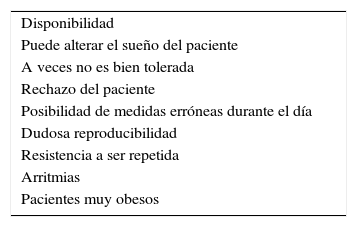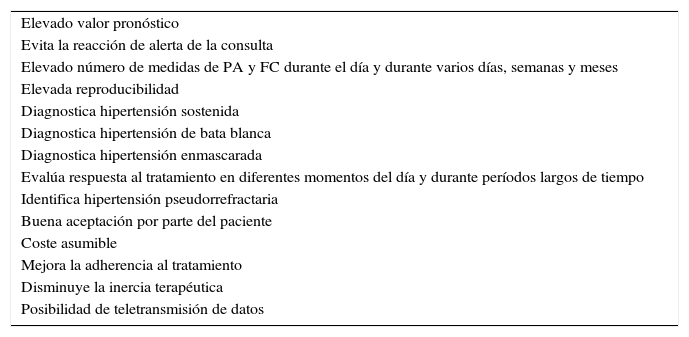Es evidente que las medidas clínicas de presión arterial pueden llevar a errores en el proceso de diagnóstico y seguimiento de los pacientes hipertensos. Las sociedades científicas recomiendan la utilización de otros métodos, como las medidas domiciliarias y la monitorización ambulatoria.
La monitorización ambulatoria quizás sea el estándar oro, pero hoy día tiene una limitación importante que es su disponibilidad.
Con las medidas domiciliarias se resuelven el 80-90% de las dudas en el proceso de diagnóstico y seguimiento de los pacientes hipertensos, y es evidente su mayor disponibilidad y aceptación por parte del paciente.
Las medidas domiciliarias se deberían utilizar en el proceso diagnóstico de la hipertensión arterial como test de cribado de la hipertensión de bata blanca y la hipertensión enmascarada. En el seguimiento de los pacientes hipertensos se deberían utilizar como test de cribado de la hipertensión resistente al tratamiento. Además, en el seguimiento de los pacientes hipertensos las medidas domiciliarias han demostrado que pueden mejorar el cumplimiento terapéutico y disminuir la inercia clínica, y también es posible la teletransmisión de datos, aspectos que han demostrado que pueden ayudar a mejorar el grado de control de los hipertensos.
Por tanto, las medidas domiciliarias serían el método de elección para el diagnóstico y seguimiento de la mayoría de los hipertensos.
Debemos considerar las medidas domiciliarias y la monitorización ambulatoria como métodos complementarios para el diagnóstico y seguimiento de los hipertensos.
It is clear that clinical measurements of blood pressure can lead to errors in the diagnostic process and follow-up of patients with hypertension. Scientific societies recommend other measurement methods, such as home measurements and outpatient monitoring.
Outpatient monitoring might be the golden standard but, nowadays has an important limitation—its availability.
Home measurements solve 80-90% of the doubts of the diagnostic process and follow-up of patients with hypertension, and its higher availability and acceptance by the patient are clear.
Home measurements should be used in the diagnostic process of arterial hypertension as a screening test for white coat hypertension and masked hypertension. They should be used as a screening test for resistant hypertension in the follow-up of patients with high blood pressure. Besides, in the follow-up of patients with hypertension home measurements have shown that they can contribute to treatment adherence, reduce clinical inertia and make data teletransmission possible, aspects that have proven to help improve the degree of control of hypertensive patients.
Therefore, home measurements would be the treatment of choice for the diagnosis and follow-up of most patients with hypertension.
We should consider home measurements and outpatient monitoring as complementary methods for the diagnosis and follow-up of patients with high blood pressure.
Artículo
Comprando el artículo el PDF del mismo podrá ser descargado
Precio 19,34 €
Comprar ahora








